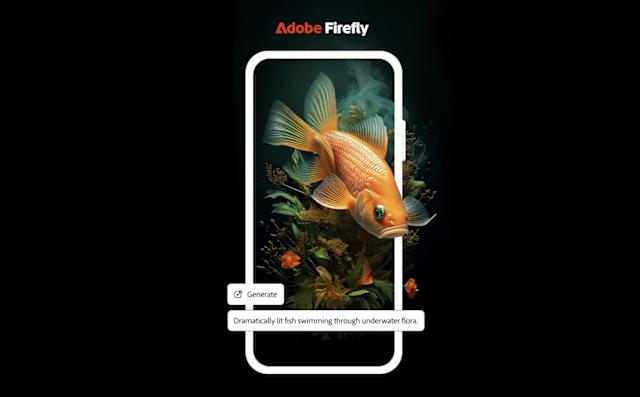Adobe's Firefly generative AI app is now available on mobile
Adobe launched the redesigned Firefly app earlier this year without Android and iOS app support, but now both versions are available for download. Firefly is a platform that integrates Adobe's AI image, video, audio, and vector generation tools all in one place. The app was relaunched in April at the Max conference in London and has since been enhancing its functionality. One new feature is Firefly Boards, which allows users to create digital mood boards easily. The app also supports third-party models like Runway, Luma, Pika, and Ideogram, expanding the generative capabilities for users.

When its redesigned Firefly app arrived earlier this year, Adobe launched the platform without Android and iOS app support, saying those would come at a later date. Today, the company is making good on that promise, with both versions available to download from their respective storefronts.
About Firefly
If you're new to Firefly, it's the place where Adobe brings together all of its AI image, video, audio, and vector generation tools. The company relaunched the app in April at its Max conference in London. Since then, it has been working on enhancing the functionality that's already there, starting with a feature it calls Firefly Boards.
The tool is a way to make digital mood boards. It was available in private beta when Adobe relaunched Firefly. Now, the company is rolling it out to everyone with a few new features in tow, including the ability to easily arrange uploads and generate video from sample assets. With today's release, Boards also offer continuity through Adobe Creative Cloud, meaning if you download an image and make a change to it in Photoshop, it will be reflected in the board.
Expanding Features
When the new Firefly first arrived, it launched with support for Adobe's own image models, as well as several partner systems such as Imagen 3, Veo 2, and ChatGPT image generation. Today, Adobe is also expanding the number of third-party models to include Runway, Luma, Pika, and Ideogram. Both new and old model providers have agreed not to use data from Adobe users for training purposes.
According to Zeke Koch, the vice president of product management for Adobe Firefly, most people use the company's Firefly Image 4 for the majority of their generative AI needs in the app, with its top-of-the-line model, Image 4 Ultra, accounting for less than 10 percent of usage. "Partner models are another step down from that," he says, suggesting they get little usage.
Our belief is that people are choosing other models when there's a capability that those models have, that our models don't have, and that they need, and they're using them in an ideation rather than production context," says Koch. For example, OpenAI offers instruction-based editing through its image generator, which makes it easy to tweak a picture without generating it again from scratch.
Moving forward, Koch says Adobe hopes to support as many models as possible, as long as the companies behind them agree to Adobe's terms. "There are a few models that we've chosen not to engage with because we're worried about data protection issues or things we have to sign to," he adds.
You can download the Adobe Firefly app from the App Store and Google Play.

